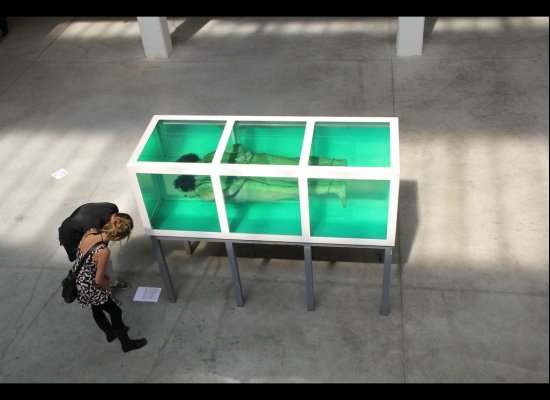This link: http://www.huffingtonpost.com/2011/10/30/the-most-controversial-wo_n_989772.html#s381081
that we were told to explore, had some very interesting artwork and "scandalous" artworks that are confusing and offensive to many people. After looking through most of them, I thought some of it was funny, some of it perplexing, and the rest just a very interesting idea and perspective on the idea of art.
I think my most favorite one was David Cerny's, Shark. I think that the impact of how much it supported
"The Physical Impossibility of Death in the Mind of Someone Living." is not only a mind shock and something to think about about what Saddam Hussein probably thought of himself, but also something we can think of ourselves and relate to. It also poked a little fun at the one before it - the Tiger Shark in formaldehyde.
A funny one that enjoyed watching the video of, was
Robert Rauschenberg, Erased de Kooning. He basically explains that he was having a difficult time drawing and that he erased his art over and over again. And then somehow got it in his mind that he needed to erase art that already existed. He then asked, while he was drunk, de Kooning to erase one of his pieces. De Kooning gave him his artwork right off the easel and Robert worked on erasing the piece for a month. It's very interesting to see the process that different people go to to decide what they have to do to achieve and get to the point where they can consider it artwork.
Overall, all the art pieces were enjoyable and gives the viewer something to think about. The comments also gave me the ability to appreciate the art but also understand the feelings of the viewers at the time. For example, if I had to walk around Richard Serra's, Tilted Arc everyday, I would be quite upset about that!








